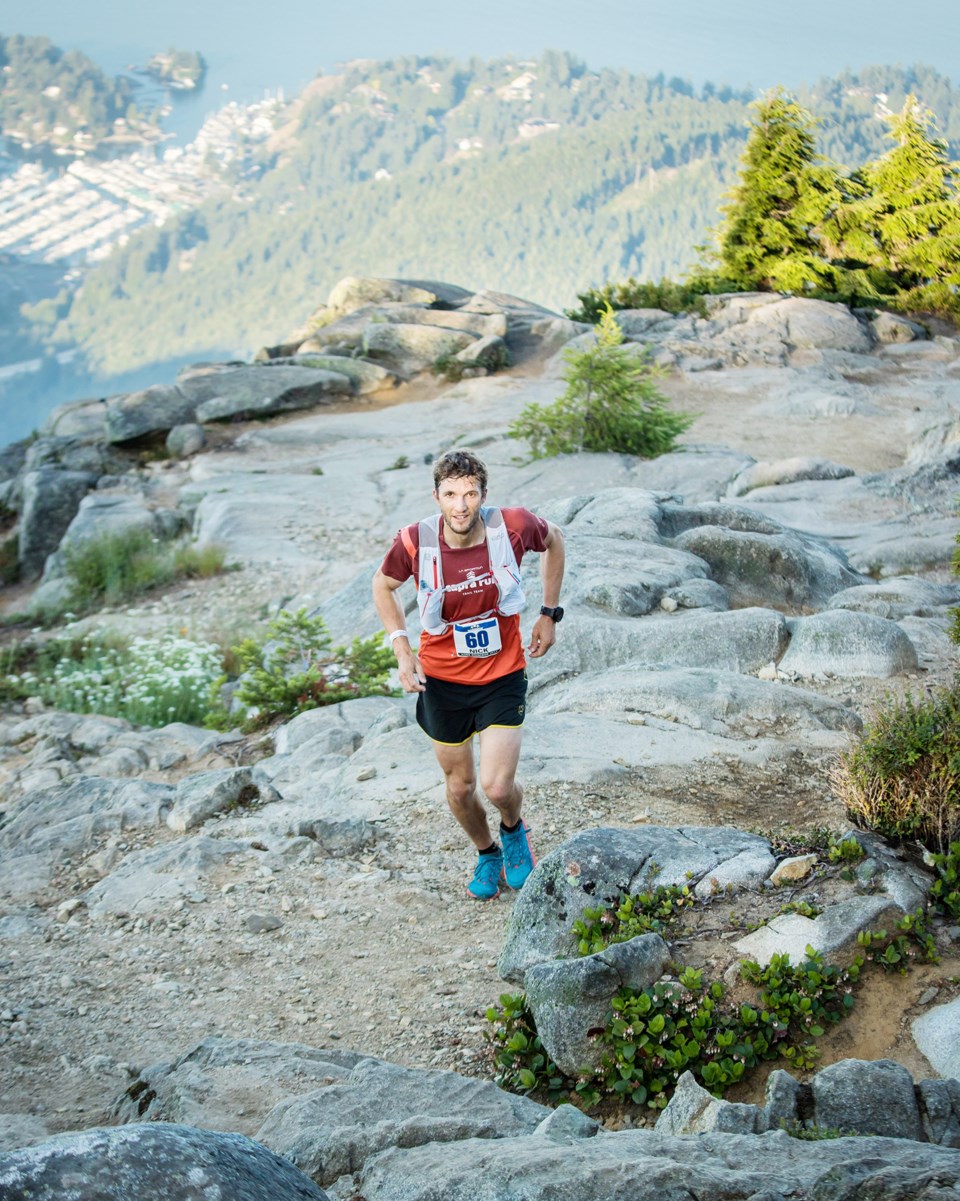With the summer season in full swing, events such as the upcoming Squamish 50 are providing a number of opportunities for runners to hit the trails.
But running isn’t easy – there’s no doubt some enthusiasts have tried dashing through a circuit only to find themselves wheezing and bent over with their hands on their knees before hitting the finish line.
So The Chief decided that it would seek out a running guru who could provide a helping hand for any couch potatoes hoping to make it to the podium.
Meet Nick Elson, a local runner who’s made a name for himself by participating in ultra-marathons, which are races that exceed the normal 42-kilometre marathon length.
Recently, the 33-year-old dashed onto the pages of Running Magazine after placing third in the Broken Arrow Skyrace in eastern California.
He nabbed a time of five hours, 11 minutes and 24 seconds after racing through a course that spanned 52 kilometres.
Most recently, Elson came out with a gold medal in the 48-kilometre Knee Knackering race in the North Shore.
He crossed the finish line after four hours, 32 minutes and three seconds. His closest competitor was Vancouver runner Cody Callon who finished at five hours, six minutes and two seconds.
Third place went to Mike Murphy of Squamish, who clocked a time of five hours, nine minutes and 52 seconds.
So what can help the average person make the transition from armchair jock to real athlete?
Elson said that it’s a matter of starting off slow.
“I think one mistake people often make is to run too hard,” he said. “Your easy runs should be legitimately easy.”
Anyone who wants to make the commitment to become a runner needs to create a manageable routine that can be replicated regularly.
This means that runners should pick a route that they know they can complete with little effort, Elson said.
Even if the route is extremely short, the important thing is that aspiring runners should be able to do it often without getting discouraged or burned out.
And if there’s a lot of hill to ascend along the way, don’t be afraid to walk those segments, as long as you don’t stop.
Once it becomes second nature, runners can consider gradually increasing the amount of distance bit by bit.
Goals should be divided into weekly, monthly and yearly targets.
When it comes to racing, Elson said a good mindset can be a big determining factor. There’s no magic mantra or routine, he noted, but it’s important to get yourself ready to deal with a lot of discomfort.
Ideally, he added, this should be second nature if you’ve been training regularly and pushing yourself to go a little farther each time.
“Just training hard you develop the ability to withstand the discomfort of racing,” he said. “You’ve got to be tough.”
It’s also a matter of training your mind to zone in on results you want to achieve rather than problems you want to avoid.
“I’ll focus on catching the people in front of me instead of worrying about the people behind who might catch up to me,” he said.
Pacing, along with good hydration and food – Elson prefers energy gels and water when he’s marathoning – is necessary to prevent yourself from hitting the dreaded “wall,” which occurs when athletes lose gas before finishing a big race. And while not all of us will become ultramarathon runners, we may get a taste of a good run, much like Elson did.
“It was definitely a race I was fairly proud of,” he said after Knee Knackering.




